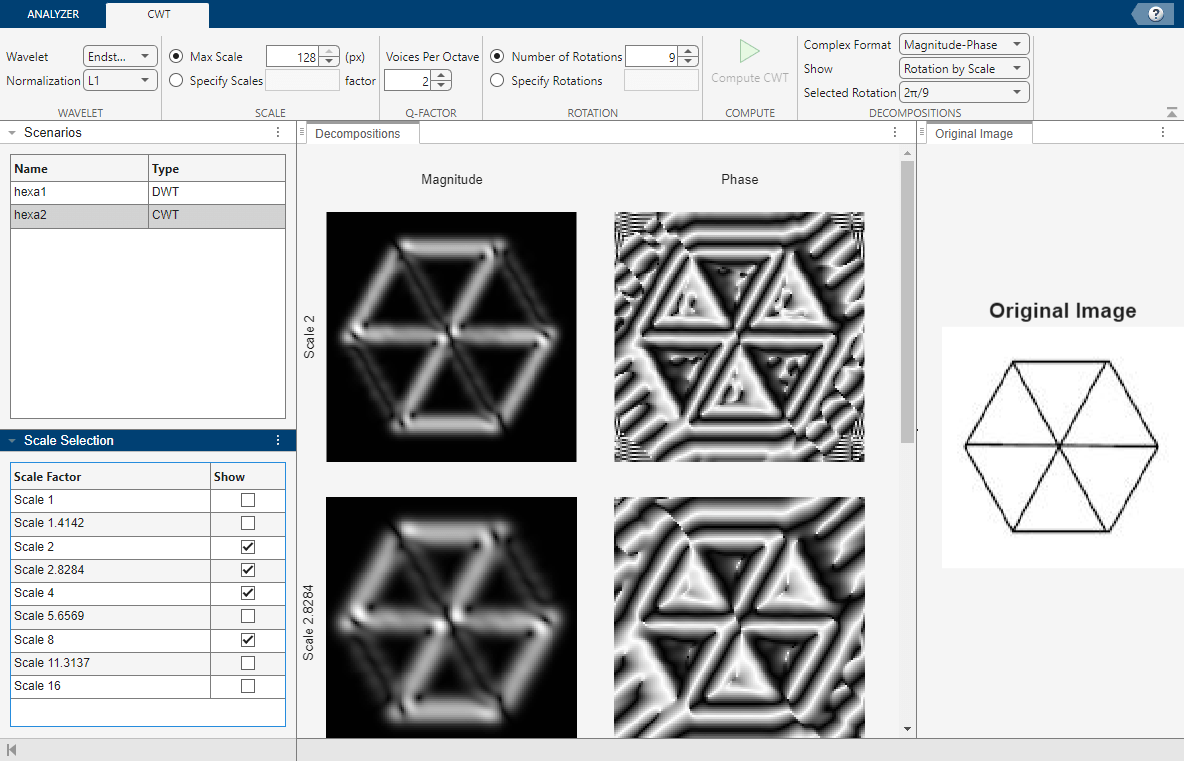Wavelet Image Analyzer
Description
The Wavelet Image Analyzer app enables you to visualize the discrete and continuous wavelet decomposition of images. With the Wavelet Image Analyzer app, you can:
Import images from your MATLAB® workspace or from a file.
Vary wavelet transform parameters.
Easily compare different decompositions.
Reconstruct an image using discrete wavelet coefficient subbands you specify.
Export the image decompositions to your MATLAB workspace.
Generate MATLAB scripts to reproduce results in your workspace.
The Wavelet Image Analyzer app supports grayscale and RGB images.
Open the Wavelet Image Analyzer App
MATLAB Toolstrip: On the Apps tab, under Image Processing and Computer Vision, click the app icon.
MATLAB command prompt: Enter
waveletImageAnalyzer.
Examples
Parameters
Programmatic Use
Tips
To decompose more than one image simultaneously, run multiple instances of the Wavelet Image Analyzer app.
